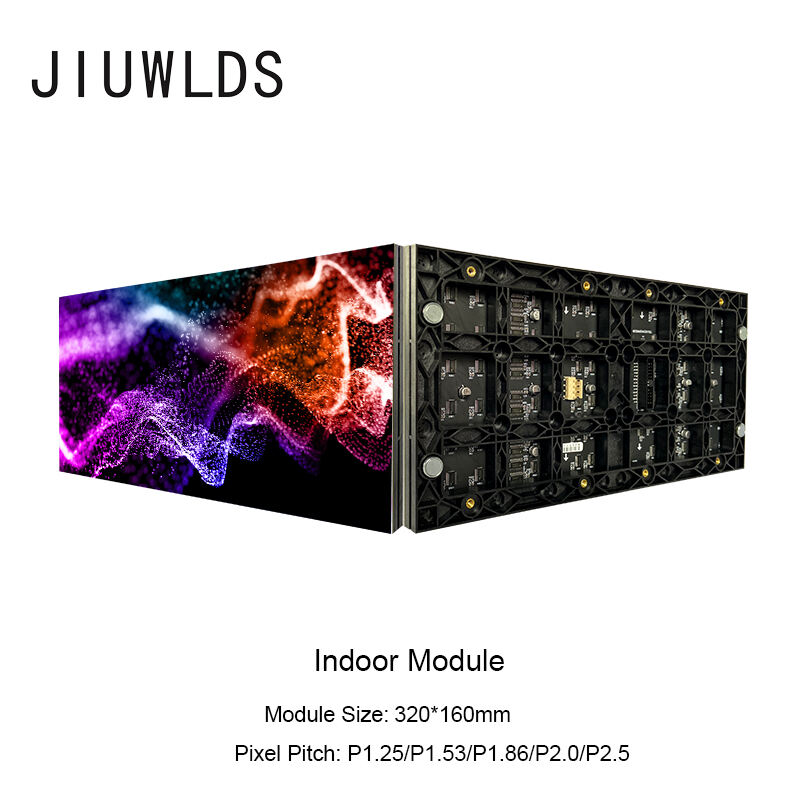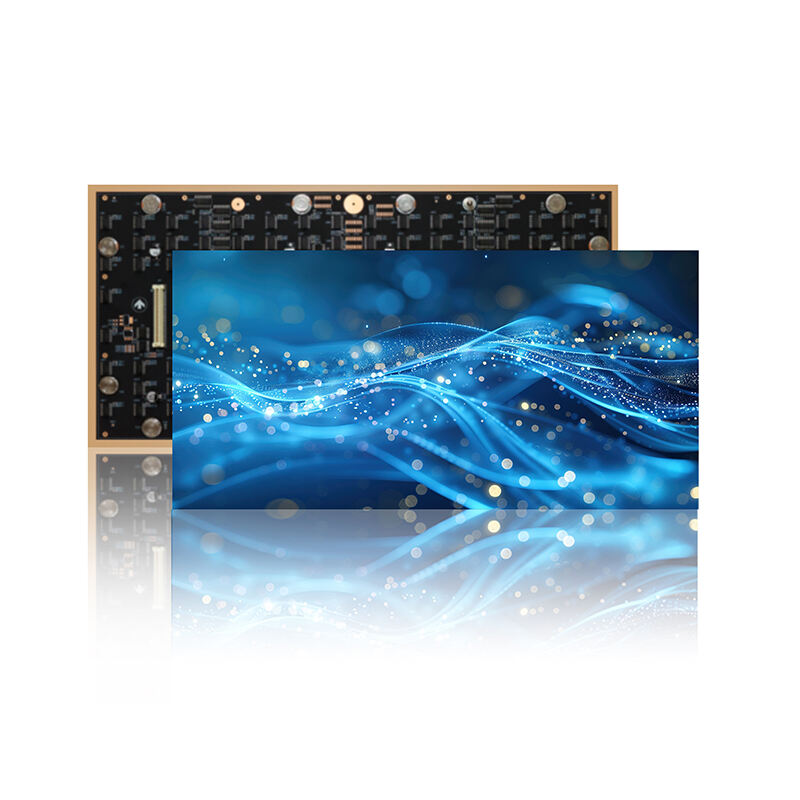Exploring the Versatility of Transparent Series in Modern Displays
Technological Innovations in Transparent Displays
Advancements in OLED Microdisplay Technology
OLED microdisplays have undergone significant evolution, showing notable improvements in resolution and efficiency compared to traditional LCD screens. Unlike LCDs, OLED technology offers substantial advantages such as lower power consumption and the capability to produce brighter, more vivid colors with deeper blacks. This attribute makes them particularly valuable in applications requiring high color accuracy and contrast. Moreover, the flexibility of OLEDs allows for innovative design capabilities, contributing to their growing use in consumer electronics and transparent displays. According to MarketsandMarkets.com, the market for OLED microdisplay technology is anticipated to experience rapid growth due to these advancements, underscoring its increasing market demand.
Micro-LED Breakthroughs for Outdoor Applications
Micro-LED and OLED technologies, while similar, have fundamental differences, particularly regarding light efficiency and pixel density. Micro-LEDs boast superior light efficiency and pixel density, making them ideally suited for outdoor applications where visibility in direct sunlight is crucial. This ability to maintain high visibility makes Micro-LED the preferred choice for large-scale installations like those in Times Square. The durability of Micro-LEDs also enhances their suitability for outdoor advertising, providing long-lasting and reliable performance in various weather conditions. Industry trends suggest an increased adoption rate of Micro-LEDs in large-scale outdoor screens, indicating their growing significance in outdoor advertising, including the burgeoning market of led display screens for advertising outdoor use.
Applications of Transparent Displays Across Industries
Revolutionizing Retail with Interactive Signage
Transparent displays are transforming retail environments by creating immersive and dynamic customer experiences. These displays allow stores to offer personalized and engaging content that captivates attention and drives customer interaction. Interactive signage enhances customer engagement, as visitors can interact with the display to learn more about products without needing assistance. This technology has been shown to increase sales conversions, as retailers like Adidas and Burberry have reported a noticeable uptick in sales after implementing transparent interactive displays. These brands are using this technology to create unique shopping environments that engage customers on multiple levels.
Automotive HUDs and Smart Windshield Integration
Transparent displays are playing a crucial role in automotive technology, particularly in enhancing heads-up displays (HUDs) and smart windshields. These displays provide real-time information such as speed, navigation, and safety alerts directly within the driver's line of sight, significantly enhancing driver safety and convenience. The adoption of automotive HUDs is expanding rapidly, with projections indicating growth rates that align with consumer demands for safer, more connected vehicles. While consumer acceptance is high, regulatory approvals remain a hurdle, yet a report from the Automotive Research Association indicates increasing acceptance of these technologies in smart vehicles.
Public Transport Systems and Smart City Infrastructure
Transparent displays are revolutionizing public transport systems by providing efficient real-time passenger information, such as route maps and advertisements. These displays are seamlessly integrated into smart city projects, enhancing the urban experience with innovative display solutions. For instance, the integration of holographic window systems by ZEISS allows passengers to access interactive content without compromising on space or energy. Supported by studies from the Technical University of Darmstadt, the inclusion of transparent displays has led to heightened customer satisfaction in public transit systems. This advancement aligns with efforts to develop smarter and more efficient urban environments.
Market Growth Drivers for Transparent Series Adoption
5G and IoT-Enabled Real-Time Data Visualization
The rollout of 5G networks is revolutionizing the capability of transparent displays by facilitating advanced data visualization, particularly in smart environments. This advancement enables transparent displays to handle heavier data loads efficiently, thereby allowing real-time dynamic content updates and interactive digital experiences. According to industry studies, 5G technology significantly enhances the bandwidth and speed necessary for these cutting-edge applications, making it instrumental in the seamless integration of Augmented Reality (AR) and Virtual Reality (VR) functionalities into transparent displays.
In synergy with 5G, the Internet of Things (IoT) plays a crucial role in feeding real-time data into transparent display systems, enhancing both user experience and operational efficiency. IoT devices continuously provide valuable data that can be visualized on transparent displays, such as energy consumption in smart homes or air quality in smart cities. This integration not only improves the usability of transparent displays in various applications but also enables predictive analytics, thereby supporting more informed decision-making processes. Research indicates an upward trend in IoT device adoption, further driving the demand for transparent displays capable of real-time data visualization.
The combination of 5G and IoT technologies is poised to drive significant growth in transparent display adoption across multiple sectors. As these technologies become more widespread, they are expected to propel the transparent display market toward unprecedented heights, fulfilling the increasing demand for interactive and data-rich environments.
Challenges and Future Directions in Transparency Tech
Balancing Energy Efficiency with High Brightness
Transparent displays, particularly those used outdoors for advertising, demand high brightness to function effectively in sunlit environments, which can lead to increased energy consumption. This imbalance raises concerns about environmental implications and the sustainability of such technologies. However, the industry is responding with innovations aimed at reducing this energy demand. For instance, improved power management techniques are being developed to optimize energy use without compromising display performance. Furthermore, advancements in energy-efficient materials are also contributing to sustainable solutions. In the context of green technology initiatives, addressing these challenges is crucial for the future viability of transparent displays. Industry efforts towards sustainability are evident as companies work on integrating eco-friendly designs into display technologies and improving energy metrics. These initiatives highlight the industry's commitment to overcoming energy challenges while maintaining high display quality.
Holographic Integration and Next-Gen AR Solutions
The integration of holographic displays presents exciting opportunities for enhancing interactive experiences across commercial and entertainment sectors. Holographic technology promises immersive engagement by providing 3D visualizations that captivate consumers. This potential opens new avenues for collaboration between augmented reality (AR) technologies and transparent displays, significantly enhancing user experience. Transparent displays serve as the ideal platform for AR solutions as they can overlay digital information while maintaining a clear view of the real world. Leading tech firms foresee substantial growth and investment in AR technologies, indicating a promising trajectory for holographic integration. Industry forecasts suggest an increase in demand for products that seamlessly combine AR capabilities with transparent displays, driven by consumer interest in more interactive experiences. As these technologies evolve, they hold the potential to redefine digital engagement in both personal and commercial settings, paving the way for next-gen solutions that merge holographic imagery with AR.







 Hot News
Hot News